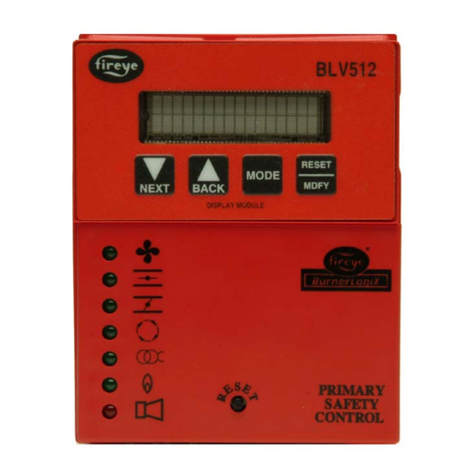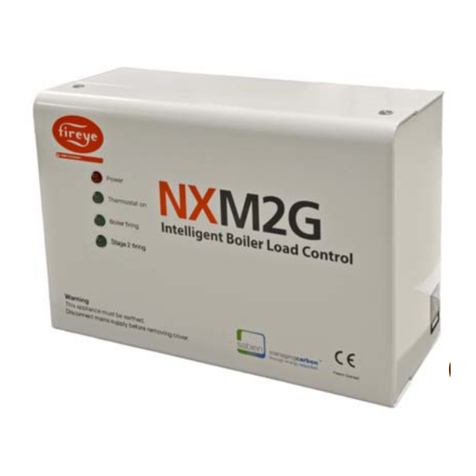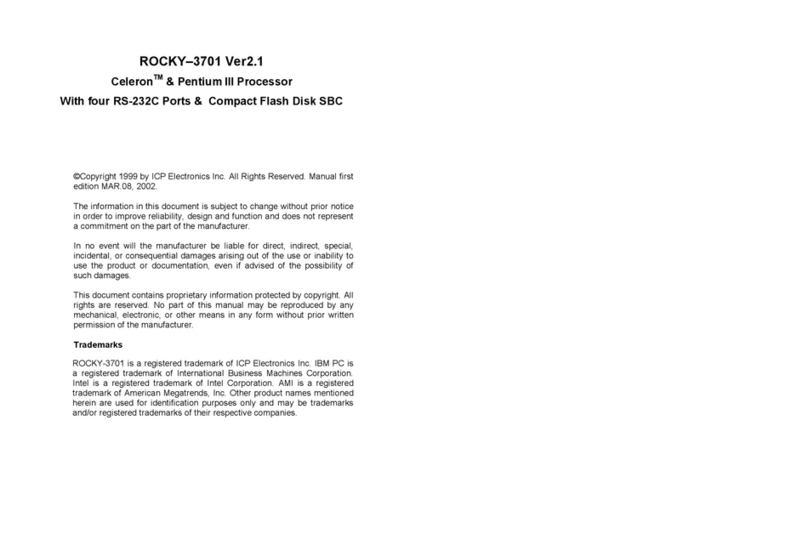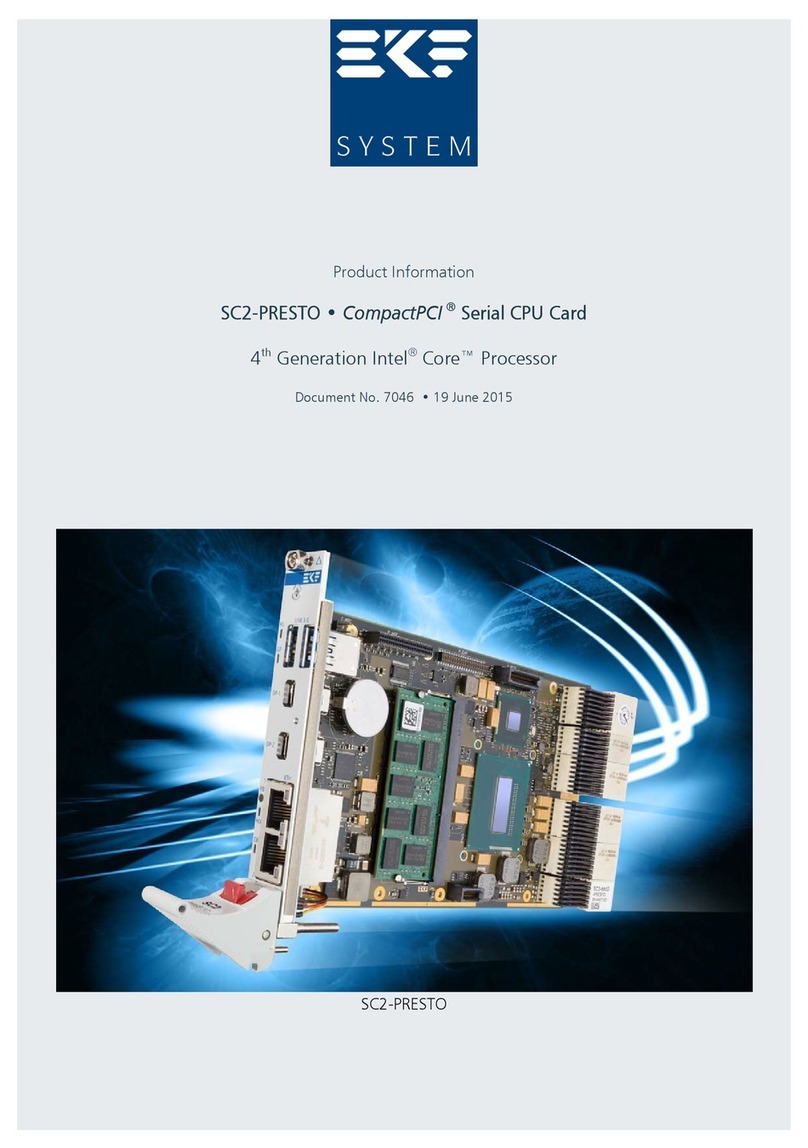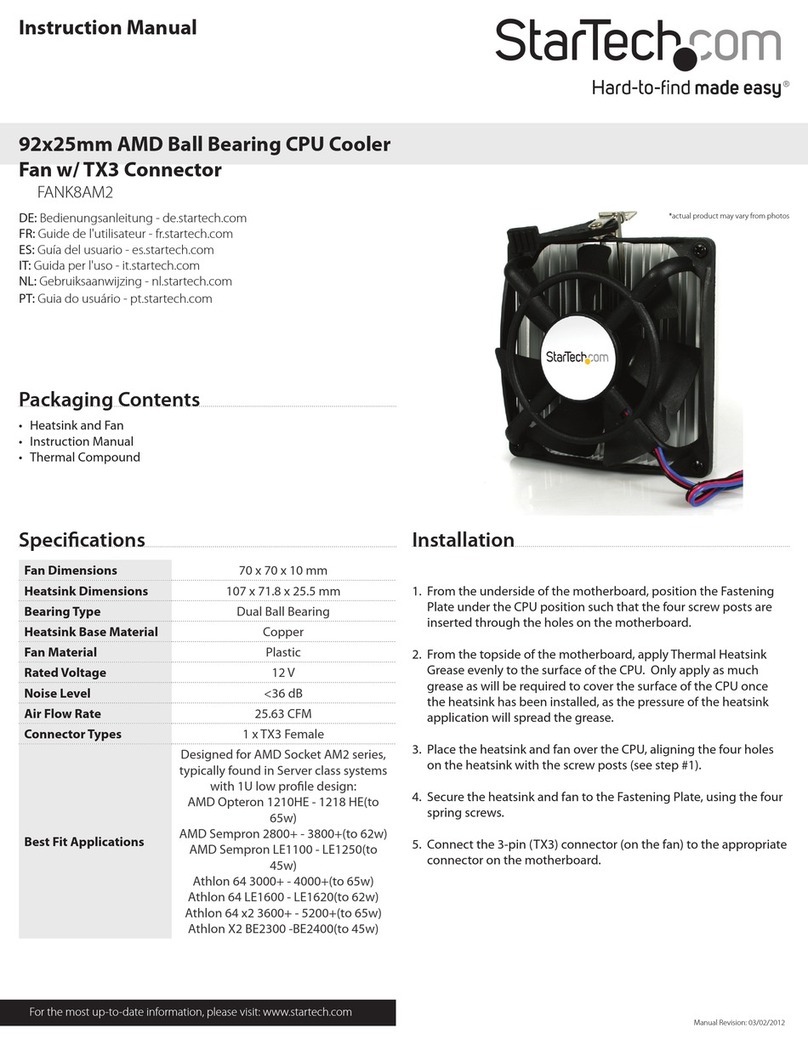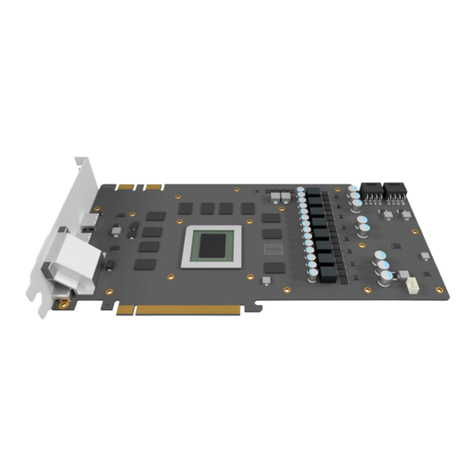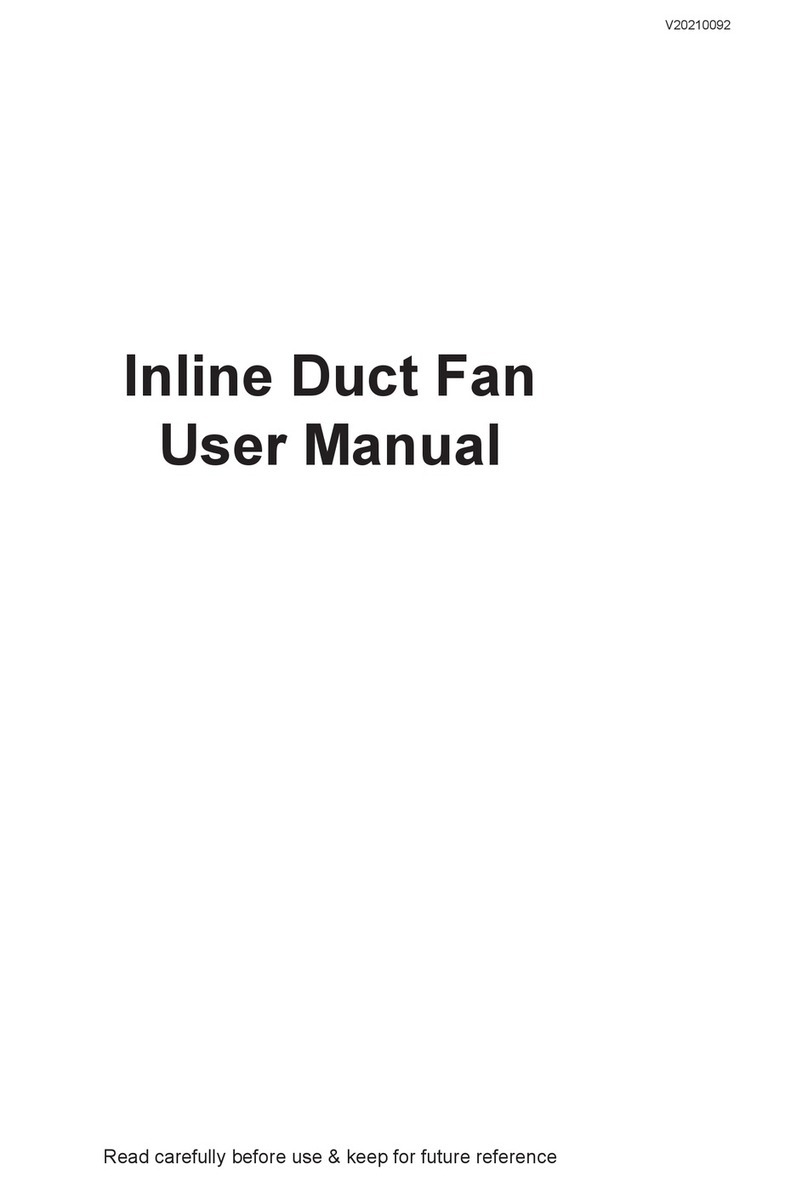Fireye BurnerLogiX ZB110 User manual

1
®
DESCRIPTION
The Fireye® BurnerLogix™ Z System expands on the standard BurnerLogix Y System (see bulletin
BL-1001) by combining boiler control functions with the same burner management control found in
the Y system. The result is a single compact package that can directly control the boiler's output fir-
ing rate based on either input pressure or temperature or both. The BurnerLogix Z System is
designed to provide the proper burner sequencing, ignition and flame monitoring protection on auto-
matically ignited oil, gas, and combination fuel burners. Through the display, the operator programs
the desired setpoint, cut in, cut out and modulating range and with PID control, the BurnerLogix Z
System controls the burner/boiler from start up through shutdown, precisely maintaining the desired
setpoint. The BurnerLogix Z System continuously monitors interlocks and limits found in the L1-3
and 3-P circuits as it programs the burner/blower motor, ignition and fuel valves to provide for
proper and safe burner operation. VFD and LCD displays are available that may be either plugged in
or mounted remotely to give full language descriptors of current status and diagnostic lockout infor-
mation as well as provide a user friendly menu system to make setting the boiler parameters easy and
understandable. When mounted remotely, the displays provide NEMA 4x(IP66) protection. Through
SMART LED'S, located on the front cover or through the display interface, the control provides cur-
rent operating status and lockout information in the event of a safety shutdown. Following are some
of the major control and monitor capabilities provided by the BurnerLogix Z System:
•Operating Control Function for automatic sequencing of the boiler system to start and stop the
boiler to meet system demand.
•Full Modulation Control of fuel and combustion air through the firing rate motor to meet sys-
tem demand.
•Solid State Sensors to monitor steam pressure, water temperature, stack temperature, boiler
water temperature, or outdoor air temperature.
•High Pressure and Temperature Alarm Limits based on inputs from solid state sensors.
Exceeded limits will open interlock circuit to the flame safeguard control for shutdown of the
burner and boiler.
•Cold Start Thermal Shock Protection to slowly increase the burner firing rate on a cold start
to limit mechanical stress due to thermal differences.
•Multiple Lead/Lag operation of two or more boilers.
•User-friendly keypad display system in either VFD or LCD format featuring the all-info dis-
play mode, program and review of system setpoints and operating parameters.
•Remote Communication Capability allows reading and writing of all setpoint information.
•Password Protected Parameters (two levels of security) to restrict unauthorized entry and
modification of system setpoints and operating parameters.
ZB110/ZB230 FIREYE®
BurnerLogiX™
MICROPROCESSOR-BASED
BURNER MANAGEMENT CONTROL
WITH INTEGRATED BOILER
CONTROL OPERATION
BLZ-1001
APPROVED
JANUARY 30, 2014

2
®
•Marginal High Pressure and Temperature Alarm Limits based on input from solid state sen-
sors to indicate system approaching high alarm limits.
•Programmable Maximum High Fire Position of modulating firing rate damper motor.
•Assured low fire cut off prevents unnecessary stress caused by burner shut down at high fire.
•Auto / Manual firing rate control with bumpless transfer
A complete BurnerLogix Z System includes the ZB110 (ZB230) chassis equipped with the type of
flame amplifier required for the application, appropriate flame detector, plug-in programmer module,
appropriate temperature/pressure transducer, wiring base and alpha-numeric display. Interchangeable
YP1XX type programmer modules allow for complete versatility in selection of function, timing and
flame failure response times. Refer to BurnerLogix PROGRAMMER SELECTION later in this doc-
ument for the various combinations of programmer and display modules.
The ZB110 (ZB230) is a chassis/flame amplifier module complete with mounting screws and blank
display module. The display module (BLV512 or BLL510), if required, must be ordered separately.
Functions such as pre-purge time, recycling or non-recycling interlocks, high fire proving interlock,
and trial for ignition timing of the pilot and main flame are determined by the programmer module.
The BurnerLogix Z System can be used with ultra-violet, autocheck infrared, flame rod, self-check
ultraviolet flame scanners or direct coupled by choosing the proper chassis/flame amplifier module.
Wiring bases for the BurnerLogix Z control are available pre-wired with 4 foot lead wires color
coded and marked for easy installation or with an integral terminal block capable of a accepting up to
2 X 14 AWG wires. The wiring base terminal block is available with knockouts for conduit or open
ended for cabinet mounting. The pigtail wiring base is 4" X 5" and the terminal block wiring base is
4" X 7".
Additional functions of the BurnerLogix Z System include:
•A non-volatile memory which allows the control to remember its history and present position
even when power is interrupted.
•A consistent flame signal read-out via display module or 4-20 mA output.
•Read-out of main fuel operational hours and complete cycles via display module.
•Modbus communications via RS485 multi-drop link.
•Proof of fuel valve closure during off cycle.
•Burn-in time of program parameters occurs after 8 hours of main valve on time.
•A run/check switch which allows the operator to stop the program sequence in any of four
different positions (Purge, PTFI, MTFI or Auto).
•Remote Display mounting with NEMA 4X/IP66 protection.
•Remote Reset
•Programmable communication baud rate allows for DCS compatibility.
•Keypad selectable language readout.
•Revert to pilot can increase burner turn down.
•Additional terminals provided for applications requiring additional inputs and outputs.
CAUTION: While programmers are mechanically interchangeable in that they mate with a
common chassis/amplifier module, you should select the correct model for your application.
Inappropriate application of a control could result in an unsafe condition hazardous to life
and property. Selection of a control for a particular application should be made by a compe-
tent professional, such as a boiler/burner service technician licensed by a state or other gov-
ernment agency.
WARNING: Electro-mechanical high steam pressure or high water temperature limits must
remain in the running interlock circuit of the flame safeguard control.

3
®
TABLE OF CONTENTS
BURNERLOGIX SPECIFICATIONS. . . . . . . . . . . . . . . . . . . . . . . . . . . . . . . . . . . . . . . . . . . . . . . . . . . . . . . . . . . . . . . . . . . . . . . . . . . . . . . . . . . . . . 4
PART NUMBERS AND APPROVALS. . . . . . . . . . . . . . . . . . . . . . . . . . . . . . . . . . . . . . . . . . . . . . . . . . . . . . . . . . . . . . . . . . . . . . . . . . . . . . . . . . . . . 7
ORDERING INFORMATION. . . . . . . . . . . . . . . . . . . . . . . . . . . . . . . . . . . . . . . . . . . . . . . . . . . . . . . . . . . . . . . . . . . . . . . . . . . . . . . . . . . . . . . . . . . . 8
INSTALLATION PROCEDURE. . . . . . . . . . . . . . . . . . . . . . . . . . . . . . . . . . . . . . . . . . . . . . . . . . . . . . . . . . . . . . . . . . . . . . . . . . . . . . . . . . . . . . . . . 11
Wiring Base. . . . . . . . . . . . . . . . . . . . . . . . . . . . . . . . . . . . . . . . . . . . . . . . . . . . . . . . . . . . . . . . . . . . . . . . . . . . . . . . . . . . . . . . . . . . . . . . . . . 11
Pressure And Temperature Sensor . . . . . . . . . . . . . . . . . . . . . . . . . . . . . . . . . . . . . . . . . . . . . . . . . . . . . . . . . . . . . . . . . . . . . . . . . . . . . . . . . 13
BURNERLOGIX PROGRAMMER SELECTION. . . . . . . . . . . . . . . . . . . . . . . . . . . . . . . . . . . . . . . . . . . . . . . . . . . . . . . . . . . . . . . . . . . . . . . . . . . 17
PTFI*MTFI Timings . . . . . . . . . . . . . . . . . . . . . . . . . . . . . . . . . . . . . . . . . . . . . . . . . . . . . . . . . . . . . . . . . . . . . . . . . . . . . . . . . . . . . . . . . . . 18
LED INDICATOR LIGHTS. . . . . . . . . . . . . . . . . . . . . . . . . . . . . . . . . . . . . . . . . . . . . . . . . . . . . . . . . . . . . . . . . . . . . . . . . . . . . . . . . . . . . . . . . . . . . 19
DESCRIPTION OF FUNCTIONS OF OPERATING CONTROLS. . . . . . . . . . . . . . . . . . . . . . . . . . . . . . . . . . . . . . . . . . . . . . . . . . . . . . . . . . . . . . 20
SETTING PROGRAMMER PARAMETERS. . . . . . . . . . . . . . . . . . . . . . . . . . . . . . . . . . . . . . . . . . . . . . . . . . . . . . . . . . . . . . . . . . . . . . . . . . . . . . . 20
PROGRAM SET UP SUB-MENU . . . . . . . . . . . . . . . . . . . . . . . . . . . . . . . . . . . . . . . . . . . . . . . . . . . . . . . . . . . . . . . . . . . . . . . . . . . . . . . . . . . . . . . 22
To View And Modify A Programmable Parameter . . . . . . . . . . . . . . . . . . . . . . . . . . . . . . . . . . . . . . . . . . . . . . . . . . . . . . . . . . . . . . . . . . . . 22
GETTING STARTED . . . . . . . . . . . . . . . . . . . . . . . . . . . . . . . . . . . . . . . . . . . . . . . . . . . . . . . . . . . . . . . . . . . . . . . . . . . . . . . . . . . . . . . . . . . . . . . . . 24
General Information . . . . . . . . . . . . . . . . . . . . . . . . . . . . . . . . . . . . . . . . . . . . . . . . . . . . . . . . . . . . . . . . . . . . . . . . . . . . . . . . . . . . . . . . . . . . 24
All-info Screen . . . . . . . . . . . . . . . . . . . . . . . . . . . . . . . . . . . . . . . . . . . . . . . . . . . . . . . . . . . . . . . . . . . . . . . . . . . . . . . . . . . . . . . . . . . . . . . . 24
Set the Password . . . . . . . . . . . . . . . . . . . . . . . . . . . . . . . . . . . . . . . . . . . . . . . . . . . . . . . . . . . . . . . . . . . . . . . . . . . . . . . . . . . . . . . . . . . . . . . 25
Units of Measure / Display Unit. . . . . . . . . . . . . . . . . . . . . . . . . . . . . . . . . . . . . . . . . . . . . . . . . . . . . . . . . . . . . . . . . . . . . . . . . . . . . . . . . . . 26
System Test. . . . . . . . . . . . . . . . . . . . . . . . . . . . . . . . . . . . . . . . . . . . . . . . . . . . . . . . . . . . . . . . . . . . . . . . . . . . . . . . . . . . . . . . . . . . . . . . . . . 27
Control Variable Configuration Sub-menu. . . . . . . . . . . . . . . . . . . . . . . . . . . . . . . . . . . . . . . . . . . . . . . . . . . . . . . . . . . . . . . . . . . . . . . . . . . 27
SEQUENCE OF OPERATION - OPERATING CONTROL . . . . . . . . . . . . . . . . . . . . . . . . . . . . . . . . . . . . . . . . . . . . . . . . . . . . . . . . . . . . . . . . . . . 29
SEQUENCE OF OPERATION - MODULATING CONTROL . . . . . . . . . . . . . . . . . . . . . . . . . . . . . . . . . . . . . . . . . . . . . . . . . . . . . . . . . . . . . . . . . 30
SEQUENCE OF OPERATION - MARGINAL AND HIGH ALARM LIMITS . . . . . . . . . . . . . . . . . . . . . . . . . . . . . . . . . . . . . . . . . . . . . . . . . . . . 32
SEQUENCE OF OPERATION - LEAD/LAG CONTROL. . . . . . . . . . . . . . . . . . . . . . . . . . . . . . . . . . . . . . . . . . . . . . . . . . . . . . . . . . . . . . . . . . . . . 34
ALTERNATE USES FOR LAG2 INPUT . . . . . . . . . . . . . . . . . . . . . . . . . . . . . . . . . . . . . . . . . . . . . . . . . . . . . . . . . . . . . . . . . . . . . . . . . . . . . . . . . . 36
SEQUENCE OF OPERATION - STANDBY WATER . . . . . . . . . . . . . . . . . . . . . . . . . . . . . . . . . . . . . . . . . . . . . . . . . . . . . . . . . . . . . . . . . . . . . . . . 37
Standby Lag Mode . . . . . . . . . . . . . . . . . . . . . . . . . . . . . . . . . . . . . . . . . . . . . . . . . . . . . . . . . . . . . . . . . . . . . . . . . . . . . . . . . . . . . . . . . . . . . 38
Standby Thermal Shock Protection Mode . . . . . . . . . . . . . . . . . . . . . . . . . . . . . . . . . . . . . . . . . . . . . . . . . . . . . . . . . . . . . . . . . . . . . . . . . . . 39
ALTERNATE USES FOR AUX 1 INPUT . . . . . . . . . . . . . . . . . . . . . . . . . . . . . . . . . . . . . . . . . . . . . . . . . . . . . . . . . . . . . . . . . . . . . . . . . . . . . . . . . 40
ALTERNATE USES FOR AUX 2 INPUT . . . . . . . . . . . . . . . . . . . . . . . . . . . . . . . . . . . . . . . . . . . . . . . . . . . . . . . . . . . . . . . . . . . . . . . . . . . . . . . . . 42
FLAME SCANNERS. . . . . . . . . . . . . . . . . . . . . . . . . . . . . . . . . . . . . . . . . . . . . . . . . . . . . . . . . . . . . . . . . . . . . . . . . . . . . . . . . . . . . . . . . . . . . . . . . . . . 44
Installation - UV Scanners . . . . . . . . . . . . . . . . . . . . . . . . . . . . . . . . . . . . . . . . . . . . . . . . . . . . . . . . . . . . . . . . . . . . . . . . . . . . . . . . . . . . . . . 44
Operation - 45UV5 & 55UV5 Self-checking UV Scanner. . . . . . . . . . . . . . . . . . . . . . . . . . . . . . . . . . . . . . . . . . . . . . . . . . . . . . . . . . . . . . . 45
Wiring - UV Scanners. . . . . . . . . . . . . . . . . . . . . . . . . . . . . . . . . . . . . . . . . . . . . . . . . . . . . . . . . . . . . . . . . . . . . . . . . . . . . . . . . . . . . . . . . . . 46
Installation - Infrared Scanner Type 48PT . . . . . . . . . . . . . . . . . . . . . . . . . . . . . . . . . . . . . . . . . . . . . . . . . . . . . . . . . . . . . . . . . . . . . . . . . . . 46
Operation - IR Learn. . . . . . . . . . . . . . . . . . . . . . . . . . . . . . . . . . . . . . . . . . . . . . . . . . . . . . . . . . . . . . . . . . . . . . . . . . . . . . . . . . . . . . . . . . . . 47
Installation - 69ND1 Flame Rod. . . . . . . . . . . . . . . . . . . . . . . . . . . . . . . . . . . . . . . . . . . . . . . . . . . . . . . . . . . . . . . . . . . . . . . . . . . . . . . . . . . 49
SYSTEM INFO SUB-MENU . . . . . . . . . . . . . . . . . . . . . . . . . . . . . . . . . . . . . . . . . . . . . . . . . . . . . . . . . . . . . . . . . . . . . . . . . . . . . . . . . . . . . . . . . . . 49
SYSTEM OPERATION. . . . . . . . . . . . . . . . . . . . . . . . . . . . . . . . . . . . . . . . . . . . . . . . . . . . . . . . . . . . . . . . . . . . . . . . . . . . . . . . . . . . . . . . . . . . . . . . 50
YP100 Operating Sequence . . . . . . . . . . . . . . . . . . . . . . . . . . . . . . . . . . . . . . . . . . . . . . . . . . . . . . . . . . . . . . . . . . . . . . . . . . . . . . . . . . . . . . 51
Start-up (Normal Cycle) . . . . . . . . . . . . . . . . . . . . . . . . . . . . . . . . . . . . . . . . . . . . . . . . . . . . . . . . . . . . . . . . . . . . . . . . . . . . . . . . . . . . . . . . . 51
Normal Shutdown. . . . . . . . . . . . . . . . . . . . . . . . . . . . . . . . . . . . . . . . . . . . . . . . . . . . . . . . . . . . . . . . . . . . . . . . . . . . . . . . . . . . . . . . . . . . . . 53
Suggested Wiring Diagram for YP138 Programmer . . . . . . . . . . . . . . . . . . . . . . . . . . . . . . . . . . . . . . . . . . . . . . . . . . . . . . . . . . . . . . . . . . . . . 54
LOCKOUT CODES. . . . . . . . . . . . . . . . . . . . . . . . . . . . . . . . . . . . . . . . . . . . . . . . . . . . . . . . . . . . . . . . . . . . . . . . . . . . . . . . . . . . . . . . . . . . . . . . . . . 55
Safety Shutdown. . . . . . . . . . . . . . . . . . . . . . . . . . . . . . . . . . . . . . . . . . . . . . . . . . . . . . . . . . . . . . . . . . . . . . . . . . . . . . . . . . . . . . . . . . . . . . . 55
Diagnostic Messages. . . . . . . . . . . . . . . . . . . . . . . . . . . . . . . . . . . . . . . . . . . . . . . . . . . . . . . . . . . . . . . . . . . . . . . . . . . . . . . . . . . . . . . . . . . . 56
Resetting the Control . . . . . . . . . . . . . . . . . . . . . . . . . . . . . . . . . . . . . . . . . . . . . . . . . . . . . . . . . . . . . . . . . . . . . . . . . . . . . . . . . . . . . . . . . . . 56
Lockout Codes . . . . . . . . . . . . . . . . . . . . . . . . . . . . . . . . . . . . . . . . . . . . . . . . . . . . . . . . . . . . . . . . . . . . . . . . . . . . . . . . . . . . . . . . . . . . . . . . 57
Lockout History Sub-menu. . . . . . . . . . . . . . . . . . . . . . . . . . . . . . . . . . . . . . . . . . . . . . . . . . . . . . . . . . . . . . . . . . . . . . . . . . . . . . . . . . . . . . . 58
COMMUNICATIONS . . . . . . . . . . . . . . . . . . . . . . . . . . . . . . . . . . . . . . . . . . . . . . . . . . . . . . . . . . . . . . . . . . . . . . . . . . . . . . . . . . . . . . . . . . . . . . . . . 60
Message Format . . . . . . . . . . . . . . . . . . . . . . . . . . . . . . . . . . . . . . . . . . . . . . . . . . . . . . . . . . . . . . . . . . . . . . . . . . . . . . . . . . . . . . . . . . . . . . . 60
Modbus Message Table. . . . . . . . . . . . . . . . . . . . . . . . . . . . . . . . . . . . . . . . . . . . . . . . . . . . . . . . . . . . . . . . . . . . . . . . . . . . . . . . . . . . . . . . . . 61
Interlock Annunciator. . . . . . . . . . . . . . . . . . . . . . . . . . . . . . . . . . . . . . . . . . . . . . . . . . . . . . . . . . . . . . . . . . . . . . . . . . . . . . . . . . . . . . . . . . . 61
Boiler Operating Parameters. . . . . . . . . . . . . . . . . . . . . . . . . . . . . . . . . . . . . . . . . . . . . . . . . . . . . . . . . . . . . . . . . . . . . . . . . . . . . . . . . . . . . . 62
Inputs . . . . . . . . . . . . . . . . . . . . . . . . . . . . . . . . . . . . . . . . . . . . . . . . . . . . . . . . . . . . . . . . . . . . . . . . . . . . . . . . . . . . . . . . . . . . . . . . . . . . . . . 64
Outputs . . . . . . . . . . . . . . . . . . . . . . . . . . . . . . . . . . . . . . . . . . . . . . . . . . . . . . . . . . . . . . . . . . . . . . . . . . . . . . . . . . . . . . . . . . . . . . . . . . . . . . 65
Explanation of Logstat . . . . . . . . . . . . . . . . . . . . . . . . . . . . . . . . . . . . . . . . . . . . . . . . . . . . . . . . . . . . . . . . . . . . . . . . . . . . . . . . . . . . . . . . . . 66
OPERATIONAL FEATURES . . . . . . . . . . . . . . . . . . . . . . . . . . . . . . . . . . . . . . . . . . . . . . . . . . . . . . . . . . . . . . . . . . . . . . . . . . . . . . . . . . . . . . . . . . . 70
4-20 Ma Test Jacks . . . . . . . . . . . . . . . . . . . . . . . . . . . . . . . . . . . . . . . . . . . . . . . . . . . . . . . . . . . . . . . . . . . . . . . . . . . . . . . . . . . . . . . . . . . . . 70
Check-run Switch . . . . . . . . . . . . . . . . . . . . . . . . . . . . . . . . . . . . . . . . . . . . . . . . . . . . . . . . . . . . . . . . . . . . . . . . . . . . . . . . . . . . . . . . . . . . . . 71
OPERATIONAL TEST . . . . . . . . . . . . . . . . . . . . . . . . . . . . . . . . . . . . . . . . . . . . . . . . . . . . . . . . . . . . . . . . . . . . . . . . . . . . . . . . . . . . . . . . . . . . . . . . 72
Test Checkout Procedures. . . . . . . . . . . . . . . . . . . . . . . . . . . . . . . . . . . . . . . . . . . . . . . . . . . . . . . . . . . . . . . . . . . . . . . . . . . . . . . . . . . . . . . . 72
Suggested Grounding Rules . . . . . . . . . . . . . . . . . . . . . . . . . . . . . . . . . . . . . . . . . . . . . . . . . . . . . . . . . . . . . . . . . . . . . . . . . . . . . . . . . . . . . . 74
BURNERLOGIX Z PROGRAMMING / SETUP GUIDE . . . . . . . . . . . . . . . . . . . . . . . . . . . . . . . . . . . . . . . . . . . . . . . . . . . . . . . . . . . . . . 77

4
®
BURNERLOGIX SPECIFICATIONS
Control:
Supply Voltage:
ZB110 120 VAC (+10%, -15%) 50/60 Hz
ZB230 230 VAC (+10%, -15%) 50/60 Hz
Power Consumption:
25 VA
Temperature Rating:
-40°C (-40°F) to +60°C (140°F)
Protection Category:
ZB110 (ZB230) control NEMA 1 (IP01)
Display, Remote mounted NEMA, 4X (IP66)
Unit Dimensions:
Wiring base 60-2850-1: - 4.0" (101 mm) W x 5.0" (127mm) H
Wiring Base 60-2852-1, 60-2854-1: - 4.0" (101 mm) W x 7.0" (178 mm) H
Shipping Weight:
ZB110 (ZB230) Approx. 3.2 lbs. (1.45kg)
Temperature Sensors:
Temperature Measurement Range:
TS350-X: 32°F to 350°F (0°C to 176°C)
TS752-X: 32°F to 752°F (0°C to 400°C)
RTD Type: Platinum, 100 ohms +-0.1% @32°F (0°C)
Temperature Coefficient: .00385 ohms/ohms/C
Output: 4-20 mA, linear with temperature
Operating Temperature Range: -13°F to 185°F (-25°C to 85°C)
Accuracy: +- 0.75% of span
Thermowell Case: 300 Series stainless steel
Mechanical Fittings: 1/2-14 NPT
Pressure Sensors:
Pressure Measurement Range: 0 to 15, 0 to 30, 0 to 200, 0 to 300 psig
Excitation Voltage: 9-30Vdc (supplied by BurnerLogix control)
Accuracy: +/- 0.25% Full Scale (at constant temperature)
Output: 4-20 mA, linear with pressure
Maximum Over Pressure: 200% of full scale
Maximum Burst Pressure: 800% of full scale
Operating Temperature Range: -40°F to 185°F (-40°C to 85°C)
Fitting: 1/4" NPT Male
Electrical: 1/2" Conduit and Terminal Strip

5
®
OPERATING TEMPERATURE LIMITS
LOAD RATINGS:
Combination of fuel and igniter terminals
Composition of each combination
Maximum connected load not to exceed 2000 VA
CONTROL MAXIMUM MINIMUM
ZB110/ ZB230 140°F 60°C -40°F -40°C
YP Programmers 140°F 60°C -40°F -40°C
BLV512, VFD Display 140°F 60°C -40°F -40°C
BLL510, LCD Display 140°F 60°C -4°F -20°C
Scanner UV1A, UV2, UV8A, UV90, 45UV3 200°F 93°C -40°F -40°C
45UV5-1005, 45UV5-1105
45UV5-1007, 45UV5-1009
55UV5-1007, 55UV5-1009
200°F 93°C -40°F -40°C
48PT2 140°F 60°C -40°F -40°C
Flame Rod (Tip 2460°F) 1500°F 816°C -40°F -40°C
TS350-X, TS7525-X
Temperature Transducers 185°F 85°C -13°F -25°C
BLPS-15, 30, 200, 300
Pressure Transducers 185°F 85°C -40°F -40°C
Humidity: 90% R.H. (Non-condensing)
Terminal Typical Load A. Maximum Rating
@120V-50/60 Hz
B. Maximum Rating
@230V-50/60 Hz
C. Alternate Rating
M Burner/Blower Motor 9.8 F.L.A. *
58 L.R.A.
4.0 F.L.A. *
20 L.R.A.
240 VA Pilot Duty
(Motor Starter Coil)
10-11-12-X Modulator 125 VA Pilot Duty
A Alarm 50 VA Pilot Duty
Terminal ratings may be selected from either column A or C for 120 VAC or from either column B or C for 30 VAC:
(select the rating from the column which best applies to the connected load on that terminal).
* F.L.A. = full load amps; L.R.A = locked rotor amps
Combination No. Pilot Fuel
Trm 6
Main
Trm 7
Ignition
Trm 5
Delayed Valve
Trm W
1C E No Load No Load
2B E No Load No Load
3No Load E No Load B
4E E A No Load
5No Load E A E
6D E A No Load
7DDAD
8No Load D A No Load
AB C D E
4.5A Ignition
@120 VAC
50 VA Pilot Duty
plus 4.5A ignition@
120 VAC
180 VA Ignition plus
motor valves with: 660
VA inrush, 360 VA
open, 250 VA hold.
2A Pilot Duty
@120 VAC
65 VA Pilot Duty plus
Motor valves with:
3850 VA inrush, 700
VA open 250 VA hold.
2.2A Ignition
@230 VAC
50 VA Pilot Duty
plus 2.2A ignition
@230 VAC
1A Pilot Duty
@230 VAC

6
®
ELECTRICAL RATINGS
VA ratings (not specified as pilot duty) permit the connection of transformers and similar devices
whose inrush current is approximately the same as their running current.
VA Pilot Duty ratings permit the connection of relays, solenoid valves, lamps, etc. whose total oper-
ating load does not exceed the published rating and whose total inrush current does not exceed 10
times the rating.
Running and locked rotor ratings are intended for motors. VA and VA Pilot Duty loads may be added
to a motor load provided the total load does not exceed the published rating.
APPROVALS
Underwriters Laboratories Inc.:
MCCZ File MP1537
Controls, Primary Safety - Listed
MCCZ2 File MP1537
Controls, Primary Safety - Component
MCCZ7 File MP1537
Controls, Primary Safety Certified for Canada
MCCZ8 File MP1537
Controls, Primary Safety Certified for Canada - Component
Factory Mutual: FM Class 7610
Acceptable by: Industrial Risk Insurers (I.R.I.)
CE: Gas Appliances
Gas Appliance Directive: 90/396/EEC
Low Voltage Directive: 73/23/EEC
EMC Directive: 89/336/EEC
GASTEC: 0063BT1754
(EN298, 2003; EN230, 2005)
DVGW Reg. No. NG-2510BT0347
DIN-CERTCO: Reg. No. 5F233/08
CAUTION: Published load ratings assume that no contact be required to handle inrush cur-
rent more often than once in 15 seconds. The use of control switches, solenoid, relays, etc.
which chatter will lead to premature failure. It is important to run through a test operation
(with fuel shut off) following the tripping of a circuit breaker, a blown fuse, or any known
instance of chattering of any external current consuming devices.
WARNING: This equipment generates and can radiate radio frequency energy, and if not
installed and used in accordance with the instruction manual may cause interference to
radio communications. It has been tested and found to comply with the limits for a Class A
computing device pursuant to Subpart J of part 15 of FCC Rules, which are designed to
provide reasonable protection against such interference when operated in a commercial
environment. Operation of this equipment in a residential area is likely to cause interference
in which case the user, at his own expense, will be required to take whatever measures which
may be required to correct the interference.

7
®
PART NUMBERS AND APPROVALS
APPLICABLE BULLETINS
Table 1: Agency Approvals
BurnerLogix
Chassis/Flame Amp. Module
ZB110UV XXXXXX
ZB110UVSC XXXXXX
ZB110IR XXXXXX
ZB110IR2 XXXXXX
ZB230UV XXX
ZB230UVSC XXX
ZB230IR XXX
ZB230IR2 XXX
BurnerLogix Programmer Module
YP100 XXX
YP102 XXX
YP138 XXX
YP118 XXX
YP183 XXX
YP113 XXXXXX
YP115 XXXXXX
BurnerLogix Displays
BLV512 XXXXXX
BLL510 XXXXXX
BurnerLogix Wiring Bases
60-2850-1 XX XXX
60-2852-1 X XXXX
60-2854-1 X XXXX
X = CERTIFICATION IN HAND
Programmers, Non-recycle Operation
YP-1001Programmers, Recycle Operation
Programmers, Non-modulating
Displays BD-5001
Wiring base installation, 60-2850-1 133-701
Wiring base installation, 60-2852-1 133-702
Wiring base installation, 60-2854-1 133-702
Pressure/Temperature Sensors BLZPTS-1
Interlock Expansion Module YZEM-3001
APPROVED

8
®
ORDERING INFORMATION
BurnerLogix Chassis/Flame Amplifier Module
ZB110UV 120 VAC input with UV non self-check amplifier
ZB110UVSC 120 VAC input with UV self-check amplifier
ZB110IR 120 VAC input with IR auto-check amplifier
ZB110IR2 120 VAC input with IR auto-check amplifier (special application only - consult factory)
ZB230UV 230 VAC input with UV non self-check amplifier
ZB230UVSC 230 VAC input with UV self-check amplifier
ZB230IR 230 VAC input with IR auto-check amplifier
BurnerLogix Programmer Modules
YP100 Keypad selectable parameters, non-recycle operation, modulation, open damper proving, 4 second FFRT
YP102 Keypad selectable parameters, non-recycle operation, modulation, open damper proving, 2 second FFRT
YP138 Keypad selectable parameters, non-recycle operation, modulation, open damper proving, indefinite pilot hold,
revert to pilot from auto, 4 second FFRT
YP118 Keypad selectable parameters, non-recycle operation, modulation, open damper proving, indefinite pilot hold,
revert to pilot from auto, 1 second FFRT
YP183 Same as YP138, terminal W used for purge complete, no voltage on 21 to move to pilot, no voltage on 16 to
move to main.
YP113 Keypad selectable parameters, non-recycle operation, modulation, open damper proving, 1 second FFRT
YP115 Keypad selectable parameters, non-recycle operation, modulation, open damper proving, 1 second FFRT
BurnerLogix Displays
BLV512 Display, 2 line X 16 characters, VFD, with cable, NEMA 4
BLL510 Display, 2 line X 16 characters, LCD, with cable, NEMA 4
BurnerLogix Wiring Bases
60-2850-1 Pigtail wires, 4 foot long, 4"W x 5"H
60-2852-1 Closed base with terminal block and knockouts, 4"W x 7"H
60-2854-1 Open base with terminal block. 4"W x 7"H
BurnerLogix Accessories
129-178-4 Kit, remote mounting, BurnerLogix display, 4 ft. cable, provides NEMA 4 protection
129-178-8 Kit, remote mounting, BurnerLogix display, 8 ft. cable, provides NEMA 4 protection
BLD500 Blank display module, included with ZB module
IT1000 Alarm annunciation system using wireless technology
61-5745-3 Shutter drive assembly for redundant self-check scanners

9
®
SCANNER SELECTION
PRESSURE/TEMPERATURE SENSORS
FIREYE P/N DESCRIPTION USE WITH CHASSIS BULLETIN
48PT2-1003
48PT2-9003
48PT2-1007
48PT2-9007
4-263-1
Infrared 1/2" straight mount 96" (2438mm) TC-ER cable
Infrared 1/2" straight mount 96" (2438mm) TC-ER cable
Infrared 1/2" straight mount 48" (1219mm) TC-ER cable
Infrared 1/2" 90° angle mount 48" (1219mm) TC-ER cable
Replacement photo detector
ZB110IR
ZB230IR
SC-103
UV1A3
UV1A6
UV8A
UV2
UV2A6
45UV3-1050
UV90-3
UV90-6
UV90-9
UV 1/2" straight 36" (915mm) TC-ER cable
UV 1/2" straight 72" (1830mm) TC-ER cable
UV 1/2" 90° head 72" (1830mm) no armor flex
UV 3/8" straight 36"(915mm) TC-ER cable
UV 3/8" straight 72" (1830mm) TC-ER cable
UV 3/4" cast aluminum housing 96" (2438mm) unshielded leads
UV 90° lateral view with 36" (915mm) flex conduit
UV 90° lateral view with 72" (1830mm) flex conduit
UV 90° lateral view with 108" (2745mm) flex conduit
ZB110UV
ZB230UV
SC-102
45UV5-1007
45UV5-1009
4-314-1
Self-check UV 1" BSP threads, 102-264VAC
Self-check UV 1" NPT threads, 102-264VAC
Replacement UV tube
ZB110UVSC
ZB230UVSC
SC-101
45UV5-1005
45UV5-1105
Self-check UV 1" NPT threads, 61-5745-3 required
Self-check UV 1" BSP threads, 61-5745-3 required
ZB110UVSC
ZB230UVSC
133-645
55UV5-1007
55UV5-1009
Self-check UV 1" BSP, 102-264VAC, suitable for hazardous locations.
Self-check UV 1" NPT, 102-264VAC, suitable for hazardous locations.
ZB110UVSC
ZB230UVSC
SC-106
FIREYE P/N DESCRIPTION BULLETIN
TS350-2, -4, -8 Temperature sensor, Range 32°F to 350°F (0°C to 176°C), 4-20 mA output, linear with tem-
perature. Insertion length is 2, 4, and 8 inches. Stainless steel thermowell included with
½"-14 NPT mounting.
BLZPTS-1
TS752-2, -4, -8 Temperature sensor, Range 32°Fto 752°F (0°C to 400°C), 4-20 mA output, linear with
temperature. Insertion length is 2, 4, and 8 inches. Stainless steel thermowell included with
½"-14 NPT mounting.
BLZPTS-1
BLPS-15 Pressure transducer, 0-15 psi (0-1030 mb), 4-20 mA output linear with pressure. ¼” NPT
mounting. Screw terminals and conduit adapter.
BLZPTS-1
BLPS-30 Pressure transducer, 0-30 psi (0-2070 mb), 4-20 mA output linear with pressure. ¼” NPT
mounting. Screw terminals and conduit adapter.
BLZPTS-1
BLPS-200 Pressure transducer, 0-200 psi (13.80 Bar), 4-20 mA output linear with pressure. ¼” NPT
mounting. Screw terminals and conduit adapter.
BLZPTS-1
BLPS-300 Pressure transducer, 0-300 psi (20.7 Bar), 4-20 mA output linear with pressure. ¼” NPT
mounting. Screw terminals and conduit adapter.
BLZPTS-1

10
®
WIRING BASE
60-2850-1
PRE-WIRED
4 FOOT
COLOR CODED
FRONT VIEW
(WITH OPTIONAL DISPLAY INSTALLED)
WIRING BASE
60-2854-1
OPEN BOTTOM
CABINET MOUNT
60-2852-1
CLOSED BOTTOM
CONDUIT KNOCKOUT
60-2854-1 SHOWN
CHASSIS/AMPLIFIER
120 VAC, 50/60 Hz
ZB110UV
ZB110UVSC
ZB110IR
230 VAC, 50/60 Hz
ZB230UV
ZB230UVSC
ZB230IR
PROGRAMMER MODULE
YP100
YP102
YP113
YP138
YP118
DISPLAY MODULE
BLV512 - VACUUM FLUORESCENT
BLL510 - LIQUID CRYSTAL
(WITH OPTIONAL PROGRAMMER AND DISPLAY INSTALLED)
SIDE VIEW

11
®
INSTALLATION PROCEDURE
WIRING BASE
Install the wiring base where the relative humidity never reaches the saturation point. The Burner-
Logix system is designed to operate in a maximum 90% relative humidity continuous, non-condens-
ing environment. Do not install the BurnerLogix system where it can be subjected to vibration in
excess of 0.5G continuous maximum vibration. The BurnerLogix system is not a weather tight
enclosure. The standard vertical position is recommended. Allow at least one inch clearance around
the control for service and installation.
1. Wiring must comply with all applicable codes, ordinances and regulations.
2. Wiring must comply with NEC Class 1 (Line Voltage) wiring.
3. Torque rating on terminal block screws is 4.4 in/lbs to 5.3 in/lbs.
4. Limits and interlocks must be rated to simultaneously carry and break current to the ignition
transformer, pilot valve and main fuel valve(s).
5. Recommended wire routing of lead wires:
a. Do not run high voltage ignition transformer wires in the same conduit with any other
wires.
b. Do not route flame detector lead wires in conduit with line voltage circuits. Use separate
conduit where necessary.
6. Maximum wire lengths:
a. The maximum lead wire length is 200 ft. (61 meters) to terminal inputs (Operating limits,
interlocks, valves, etc.).
b. Flame Detector lead wires: see section on flame scanners
c. Remote reset: The maximum length of wire is 500 feet (152 meters) to a normally open
remote reset push-button, but should remain within sight and sound of the burner.
d. Modbus communications: The maximum cable length of wire is 3300 feet (1000 meters)
for RS-485.
A good ground system should be provided to minimize the effects of AC quality problems. A prop-
erly designed ground system meeting all the safety requirements will ensure that any AC voltage
quality problems, such as spikes, surges and impulses have a low impedance path to ground. A low
impedance path to ground is required to ensure that large currents involved with any surge voltages
will follow the desired path in preferences to alternative paths, where extensive damage may occur
to equipment.
Select either the pre-wired wiring base (60-2850-1) or terminal block style (60-2852-1, 60-2854-1).
Either wiring base type can be mounted on a din rail or directly mounted to the cabinet back plate.
Refer to Figure 3 for mounting dimensions.
FIGURE 1.
HEIGHT WITH CONTROL INSTALLED IS 5.8" (147MM)

12
®
The location should be free from excessive vibration and within the ambient temperature rating.
FIGURE 2. WIRING BASE CONNECTIONS (shown for 120 VAC)
UL does not apply to 230 VAC operations
Terminal No.
60-2852-1
60-2854-1
Wire Color
60-2850-1
Type Description Rating
L1 (Hot) Black Line voltage supply 120 VAC (+10%, -15%), 50/60 Hz
L2 (Neutral) White Line voltage common
EARTH Green Ground
S1 Red/Wht Scanner Input 300 VAC, 3 mA (UV models)
15 VDC (IR models)
S2 Blu/Wht Scanner Input 300 VAC, 3 mA (UV models)
0 VDC (IR models)
A Red Output Alarm 120 VAC, 1 A pilot duty
M Brown Output Combustion Blower 120 VAC, 9.8 FLA, 58.8 LRA
3 Yellow Input Operating Control 120 VAC, 1 mA
13 Orange Input Fuel Valve End Switch,
Pre-Ignition Interlock
120 VAC, 1 mA
P Gray Input Running Interlock 120 VAC, 1 mA
D Wht/Brn Input Low Fire Start Switch 120 VAC, 1 mA
8 Wht/Gry Input Open Damper Proving Switch 120 VAC, 1 mA
W Wht/Orn Output Delayed Main Valve See Load Ratings
5 LT Blue Output Ignition / Pilot Valve See Load Ratings
6 Tan Output Pilot Valve See Load Ratings
7 Violet Output Main Fuel Valve See Load Ratings
16 DK Blue Input Lag 1 Input See description for
alternate uses
21 Pink Input Lag 2 Input
LOW VOLTAGE INPUT/OUTPUT
12 Wht/Yel Output Modulator Drive Positive 4-20mA Output
10 Wht/Red Output Modulator Drive Common
X Wht/Blue Output Temp/Pressure Source Voltage 28 vdc Nominal
11 Wht/Grn Input Temp/Pressure #1 (PCV) 4-20mA Input, Primary Control Variable
22 Wht/Vio Input Temp/Pressure #2 (AUX 1) 4-20mA Input
23 Brn/Wht Input Temp/Pressure #3(AUX 2) 4-20mA Input

13
®
PRESSURE AND TEMPERATURE SENSORS
1. Insure that the range of the selected pressure or temperature sensor is appropriate for the
application. See Table 2
Table 2:
2. Note: A general rule to follow when selecting the sensor range is that the expected value of the
monitored pressure or sensor should fall between 40-70% of the upper range of the sensor. For
example, a steam boiler maintains 20 lbs. pressure, select the BLPS-30 Pressure Sensor, with a
0-30 psig range.
3. The sensors must be located where the ambient temperature will not exceed the maximum ambi-
ent operating temperature specified for the sensor.
4. Insure that the pressure range programmed on the BurnerLogix Z Control matches the installed
pressure sensor.
5. Do not mount any of the sensors where they could be used as a footstep.
Installation must be performed by a trained, experienced flame safeguard technician.
MOUNTING PRESSURE SENSORS
Note: refer to Figure 3
1. The steam pressure sensors (BLPS-15, -30, -200, -300) provide a 1/4" NPT female fitting for
connection to the steam header.
2. Make sure the boiler is shut down and zero steam pressure exists in the boiler vessel.
3. Disconnect power to the boiler controller so the boiler cannot sequence during installation of the
steam pressure sensor.
4. Always mount the steam pressure sensor above the water line of the boiler.
5. Locate the pressure sensors where the ambient temperature will not exceed 185F
6. Use only a small amount of pipe compound to seal the connection joints. Excess pipe compound
may clog the fitting and prevent proper operation of the sensor.
Part
Number SensorType Set Point Range Cut In Cut Out Mod Range Increment
Decrement
0 - 15.0 psi 1.0 - 14.0psi 0 - 6.0psi 0.3 - 6.0psi 0.3 - 6.0psi 0.1psi
0 - 1030mb 70 - 960mb 0 - 410mb 20 - 410mb 20 - 410mb 10mb
0 - 30.0 psi 1.0 - 28.0psi 0 - 6.0psi 0.3 - 6.0psi 0.3 - 6.0psi 0.1psi
0 - 2070mb 70 - 1930mb 0 - 410mb 20 - 410mb 20 - 410mb 10mb
0 - 200 psi 10 - 190psi 0 - 60psi 3 - 60psi 3 - 60psi 1.0psi
0 - 13.8b 0.7 - 13b 0 - 4.1b 0.2 - 4.1b 0.2 - 4.1b .05b
0 - 300 psi 10 - 280psi 0 - 60psi 3 - 60psi 3 - 60psi 1.0psi
0 - 20.7b 0.7 - 19.3b 0 - 4.1b 0.2 - 4.10b 0.2 - 4.10b .05b
32º - 350ºF 36º - 338ºF 0º - 60ºF 3º - 60ºF 3º - 60ºF 1ºF
0º - 176ºC 4º - 170ºC 0º - 60ºC 3º - 60ºC 3º - 60ºC 1ºC
32º - 752ºF 36º - 725ºF 0º - 60ºF 3º - 60ºF 3º - 60ºF 1ºF
0º - 400ºC 4º - 385ºC 0º - 60ºC 3º - 60ºC 3º - 60ºC 1ºC
BLPS-15
BLPS-30
BLPS-200
BLPS-300
mb = millibar, p = psi, b = bar
Note: 1 psi = 68.9 mbar
TS350-X*
TS752-X*
*Select Length X = -2”, -4” or -8”

14
®
FIGURE 3.
7. Although the unit can withstand substantial vibration without damage or significant output
effects, it is good practice to mount the pressure sensor where there is minimum vibration.
8. A steam trap (siphon loop) must be connected between the boiler and the pressure sensor to pre-
vent boiler scale and corrosive vapors from affecting the pressure sensor element.
9. Make all pipe connections in accordance with approved standards.
10. When tightening the sensor, apply a wrench to the hex flats located just above the pressure fit-
ting. DO NOT tighten by using a pipe wrench on the housing. Do not tighten the pressure sensor
by hand.
.
MOUNTING TEMPERATURE SENSORS
The immersion style temperature sensors have a ½" NPT mounting for the 2", 4", and 8" thermowell
probes, and a ½" conduit fitting for electrical connections.
HOT WATER, STANDBY WATER TEMPERATURE
Note: Refer to Figure 3
1. Disconnect power to the boiler controller so the boiler cannot sequence during installation of the
hot water temperature sensor.
2. The thermowell must be mounted where it is always exposed to the circulation of the hot water.
3. If the water system is full, drain the system below the point where the thermowell will be
installed.
4. Tap an appropriate size fitting. (2", 4" and 8" thermowell have ½" NPT fitting).
5. Insert the appropriate thermowell (2", 4", or 8") and tighten.
6. Fill the system to check for leakage.
STACK TEMPERATURE
1. Use the existing well connection for the stack temperature sensor if provided by the boiler
manufacturer.
WARNING: The electro-mechanical high steam limit and/or high hot water temperature
MUST REMAIN in the 3-P running interlock circuit.
WARNING: Location of the temperature sensor to monitor boiler water temperature of a
steam boiler is critical. The sensor should be mounted where it is always exposed to the cir-
culation of the boiler water, not too close to a hot or cold inlet or steam coil. Consult the
boiler manufacturer for guidance on the sensor location

15
®
2. If no well connection is provided, select an appropriate location for mounting the temperature
sensor. Preferably as close to the boiler outlet as possible.
OUTDOOR TEMPERATURE
1. The outdoor air temperature sensor should be mounted on the outside of the building where it
will be exposed to representative air temperature, but not to direct sunlight. A sun shield may be
required.
2. Mount the temperature sensor high enough so it cannot be covered with snow, leaves, or other
debris, or be tampered with. Vents from the building should be avoided
WIRING PRESSURE AND TEMPERATURE SENSORS
1. All wiring must be in accordance with National Electrical Code and local codes, ordinances, and
regulations.
2. Sensor housing provides connection for 1/2" conduit.
3. The pressure and temperature sensors require 2 conductor, 18 gauge, shielded cable. Power lim-
ited, rated for 300V @105C. Use Belden 9318 or equivalent.
4. The shield should be connected to the earth ground terminal on the wiring base of the Burner-
Logix Control (Terminal #E). The shield should be taped at the sensor to avoid unintended con-
tact with the sensor housing.
5. All sensor wiring should be in a separate conduit. DO NOT install sensor wiring in any conduit
or junction boxes with high voltage wiring.
6. Maximum wiring distance for sensor wiring is 100 feet.
7. See following chart for wiring terminations:
WIRING FIRING RATE MOTOR
1. All wiring must be in accordance with National Electrical Code and local codes, ordinances, and
regulations.
2. For 4-20 mA motors, use 2 conductor, 18 gauge, shielded cable. Power limited, rated for 300V
@105C. Use Belden 9318 or equivalent.
3. The shield should be connected to the earth ground terminal on the wiring base of the Burner-
Logix Control (Terminal #E). The shield should be taped at the motor to avoid unintended con-
tact with the motor housing.
4. All wiring should be in a separate conduit. DO NOT install wiring in any conduit or junction
boxes with high voltage wiring.
5. Maximum wiring distance for sensor wiring is 100 feet.
TS350/TS752 BLPS PCV AUX1 AUX2
1 +EXC X (WHT/BLU) X (WHT/BLU) X (WHT/BLU)
2 -COM 11 (WHT/GRN) 22 WHT/VIO) 23 (BRN/WHT)
CAUTION: Disconnect power supply from the BurnerLogix Control before connecting
wires to prevent electrical shock and equipment damage.
CAUTION: PROGRAM AND SET-UP
The proper operation of the BurnerLogix System and the pressure and temperature sensors
require that the selected pressure ranges are appropriate for the application and must
match the pressure range programmed on the BurnerLogix Control. Insure that the range
of the selected sensor is correct for the application and pressure range matches the installed
pressure sensor.

16
®
BEFORE INSTALLING THE BURNERLOGIX CONTROL
INSTALLING THE YP PROGRAMMER MODULE
The YP programmer module plugs into the side of
the ZB110 (ZB230) chassis module and can only
be installed in one direction. DO NOT ATTEMPT
TO FORCE THE YP PROGRAMMER INTO
THE CHASSIS. Referring to the illustration on the
right, align the holes in the YP programmer hous-
ing with the posts located within the ZB chassis.
Push the YP module into the chassis until the YP
module is flush with the ZB housing.
If it is necessary to remove the YP programmer
module from the ZB chassis, 2 slots are provided
on the top and bottom of the YP housing. A small
screwdriver can be used to ‘pop’ the programmer
from the chassis.
Note: The BurnerLogix Z system can only be used with YP100, YP102, YP138, YP113 or YP118
programmers. All other programmer types will cause LOCKOUT, INVALID YP TYPE to be dis-
played.
For installations requiring CE certification:
After installation, the equipment should be protected from general access by means of a cabinet
which is only accessible with a key or special tool and therefore a clear responsibility who replaced
the fuse. If the fuse is blown during installation or operation, the control must be sent to the manu-
facturer to check.
ELECTRICAL CHECKOUT
If either a ground or a short circuit is detected, it must be eliminated before the control is plugged
into the wiring base and power turned on.
Test the electrical field wiring for short circuits and grounds. The recommended method requires the
use of an ohmmeter set on its lowest resistance scale.
6. Touch the meter probes together and calibrate accurately to ensure a reliable test.
7. Disconnect the neutral wire (L2) from the control system at the power source. Clip one meter
test lead to the grounded green wire or to terminal E and with the other probe touch each other
terminal. At no time should the meters show continuity or read 0 ohms.
8. Reconnect the neutral wire (L2) at the power source. Remove the test probe from the grounded
terminal and reconnect it to Terminal L2 in the wiring base. With the other probe, touch each
other terminal. It is normal to obtain a resistance reading on the meter at some terminals during
this test as there are resistive loads (coils, transformers, lamps, etc.) connected whose normal
DC resistance may be less than 5 ohms. However, at no time should the test meter read zero
ohms.
WARNING: Controls require safety limits utilizing isolated mechanical contacts. Electronic
limit switches may cause erratic operation and should be avoided.
CAUTION: Ensure that electric power is turned off. Refer to SN-100 for recommended
grounding techniques.
Be aware that power to some interlocks (operating controls, air flow switches, modulating
circuits, etc.) may be derived from sources other than what is controlling the BurnerLogix.
ZB110
YP100

17
®
9. With BurnerLogix installed, measure voltage from L2 to all other terminals. Reading should be
zero on all terminals except Ll.
INSTALL BURNERLOGIX INTO WIRING BASE
The BurnerLogix ZB chassis/amplifier module contains 2 screws permanently retained into the top
and bottom of the housing. The wiring base contains two brass inserts with recessed threads to ease
the installation. Line up the printed circuit board spacer located in the ZB chassis/amplifier module
with the alignment tabs located in the wiring base. Firmly push the ZB model into the wiring base to
assure the connectors mate properly. Tighten the screws into the brass inserts until snug.
REPLACEABLE FUSE
The following applies only to the ZB110 controls operating at 120 VAC, 50/60 Hz:
The chassis/amplifier modules are designed with a field replaceable fuse to protect Terminals 5, 6, 7
and W against short circuit loads or mis-wiring. In the event the fuse becomes OPEN, the display
will indicate CHECK FUSE or the CLOSE DAMPER, AUTO and IGN LED’s will light. An OPEN
or blown fuse is a result of an over current condition on Terminals 5, 6, 7, or W. The over current
condition causing the fuse to OPEN must be resolved before another attempt to apply power.
For installations requiring CE certification:
Only Fireye or a Fireye trained technician is allowed to replace the fuse.
All other installations:
The fuse is located on the printed circuit board containing the relays. To replace the fuse, remove
power from the system and remove the control from its wiring base. Using an appropriate tool,
remove the defective fuse and discard. Install a Fireye replacement fuse (P/N 23-197). Re-install the
BurnerLogix control in accordance with the installation procedure detailed in a previous section.
The ZB230 control contains a non-replaceable fuse and must be returned to the manufacturer for
repair or replacement.
BURNERLOGIX PROGRAMMER SELECTION
All programmers for the BurnerLogix Series are designated with the prefix “YP”. The functional
operation, flame failure response time, purge timings, firing rate motor circuit, trial for ignition tim-
ings, recycling function and display messages are determined by the programmer.
A chart of the most common programmers is found below.
Take note of the programming sequence chart for each programming module for the proper explana-
tion of prepurge timings.
CAUTION: Restore power for the following test.
WARNING: THE INAPPROPRIATE SELECTION OR APPLICATION OF A PRO-
GRAMMER MODULE COULD RESULT IN AN UNSAFE CONDITION HAZARDOUS
TO LIFE AND PROPERTY. The various programmer modules are interchangeable
because they plug into a common ZB chassis. Many parameters are configurable through
the keypad display. Care should be taken to insure the proper parameters are set. Refer to
the appropriate programmer bulletin for appropriate settings. Selection of the programmer
module and setting the various parameters for a particular application should be made by a
competent professional, such as a Boiler/Burner technician licensed by a state or govern-
ment agency, engineering personnel of the burner, boiler or furnace manufacturer (OEM)
or in the performance of duties based on the information from the OEM.
WARNING: FOR IR MODELS, PRIOR TO VERSION 12, IT IS HIGHLY RECOM-
MENDED THAT AN "IR LEARN" OPERATION BE PERFORMED TO GUARANTEE
RELIABLE OPERATION. REFER TO IR LEARN SECTION FOR MORE INFORMA-
TION.

18
®
PTFI*MTFI TIMINGS
The BurnerLogix system provides keypad selectable timings for both PTFI and MTFI. The selec-
tions offered can provide 5 or 10 second timing for terminal 5 and 6 or a shortened time for terminal
5, allowing for early spark termination. BurnerLogix also provides selectable interrupted or intermit-
tent operation for terminal 6.
The selections provided for PTFI*MTFI timings are:
Table 3:
FIREYE
PART
NUMBER
Pre-purge
Programming
(Seconds)
Proven
High Fire
Interlock
(M-8)
Proven
Low Fire
Interlock
(M-D)
Terminal 6,
Interrupted
or
Intermittent
Early Spark
Termination
PTFI
(5/6)
MTFI
(5/6)
Running
Interlock
(3-P)
Flame Fail
Time
(Seconds)
Firing
Rate
Motor
SETTINGS SHOWN ARE FACTORY DEFAULT
YP100 30 YES YES INTRP NO 10/10 10/15 Non-recycle 4 YES
YP102 30 YES YES INTRP NO 10/10 10/15 Non-recycle 2 YES
YP138 30 YES YES INTRP NO 10/10 10/15 Non-recycle 4 YES
YP118 30 YES YES INTRP NO 10/10 10/15 Non-recycle 1 YES
YP183 30 YES YES INTRP NO 10/10 10/15 Non-recycle 4 YES
YP113 30 YES YES INTRP NO 5/5 3/5 Non-recycle 1 YES
YP115 30 YES YES INTRP NO 5/5 3/5 Non-recycle 1 YES
SELECTION PTFI MTFI COMMENT
Term 5 Term 6 Term 5 Term 6
10/10*10/15 10 10 10 15
5/5*0/10 5 5 0 10 NO SPARK DURING MTFI
5/5*0/5 5 5 0 5 NO SPARK DURING MTFI
5/5*10/15 5 5 10 15 SHORTENED PTFI
5/5*10/10 5 5 10 10 SHORTENED PTFI
5/10*0/15 5 10 0 15 EARLY SPARK TERMINATION
5/10*0/10 5 10 0 10 EARLY SPARK TERMINATION
10/10*0/10 10 10 0 10 NO SPARK DURING MTFI
10/10*0/5 10 10 0 5 NO SPARK DURING MTFI
10/10*10/10 10 10 10 10

19
®
LED INDICATOR LIGHTS
The BurnerLogix ZB control module has seven (7) LED indicator lights to annunciate the operating
status of the control, as well as provide the reason for the last lockout condition. The “Open
Damper” and “Close Damper” LED's provide easy set-up of the modulating motor end switches.
Each LED has a graphic symbol to describe its function (see Table 4 ).
Table 4:
FAN Lights when the blower motor is energized (terminal M) and flashes when the RUN/CHECK
switch is in the “CHECK” position during Purge, PTFI, MTFI and AUTO.
OPEN
DAMPER
Will blink when the modulator motor is being driven to the high fire position. (circuit 10-X
made). Once the high purge switch closes (M-8), this LED will light constant. This LED pro-
vides the status of the high fire purge interlock circuit (M-8). This LED lights anytime the M-
8 circuit closes during Prepurge, PTFI, MTFI, Post Purge.
CLOSE
DAMPER
Will blink when the modulator motor is being driven to the low fire position (circuit 10-12
made). Once the low fire switch closes (M-D), this LED will light constant. This LED provides
the status of the low fire start interlock circuit (M-D). This LED lights anytime the M-D circuit
closes during Pre-purge, PTFI, MTFI, post purge.
AUTO Will light when the control releases to automatic modulating control (circuit 10-11 made).
IGNITION Will blink during Pilot Trial For Ignition (PTFI). Will light constant during Main Trial For Igni-
tion (MTFI).
FLAME Will light whenever flame is detected by the flame scanner.
ALARM In the event of a lockout condition, the Alarm LED will blink, the remaining LED's will light up
to indicate the lockout condition. See “Safety Lockout Codes.”

20
®
DESCRIPTION OF FUNCTIONS OF OPERATING CONTROLS
1. Operating Controls: Generally pressure or temperature activated, the operating control closes,
causing the burner start-up sequence to begin. When the operating control opens, the burner
shuts off. The operating control is connected in the L1-3 circuit on the wiring base.
2. Limit Switches: These are generally pressure, water level or temperature activated
a. Recycle — when it is desired to stop the burner when the limit switch opens and restart it
when the limit switch recloses, they are connected between Terminals L1 and 3.
b. Non-Recycle —when it is necessary to stop the burner when the limit switch opens and pre-
vent it from starting until both the limit switch recloses and the manual reset is activated, they
are connected between terminals 3 and P.
3. Fuel Valve End Switch Interlock: This is generally an integral switch mounted on the main
fuel valve and activated by the valve stem. It is connected between Terminal L1 & 13. The fuel
valve end switch interlock prevents a burner start-up if the valve stem is not in the “valve
closed” position. This interlock must remain closed while in STANDBY and until the start of
PTFI.
4. Purge Interlock: Generally a firing rate motor linkage position switch or a differential air-pres-
sure switch, that proves a maximum purge air flow rate. It is connected between Terminals M
and 8. The purge interlock proves that the air damper is fully open and purge air flow rate is at
maximum during the purge.
5. Running Interlocks: These generally are air flow switches, high and low fuel pressure
switches, oil temperature switches, atomizing media pressure switches, and excess smoke den-
sity controls. These interlocks prove proper conditions for normal operation of the burner. They
are wired in series and connected between Terminals 3 and P.
6. Low Fire Start Interlock: Generally a firing rate motor linkage position switch or a damper
position switch, will prove both the linkage and dampers are in their proper positions to begin
burner light off. This switch is connected between Terminals M and D.
SETTING PROGRAMMER PARAMETERS
In order to change the factory default parameters stored in the programmer module an optional key-
pad/display (BLV512 or BLL510) is required. All configurable parameters are stored within the
PROGRAM SETUP sub-menu. The keypad/display module provides tactile feedback keys that are
used to access the sub-menus inherent in the BurnerLogix system.
The BurnerLogix display consists of 2 lines having 16 characters per line. The default displayed item
is the current operating status. This would include the current point in the burner sequence followed
by the parameter pertaining to that point in the sequence, such as time or the flame signal level. The
bottom line is used to display the current operating status. The BurnerLogix display also provides the
historical information stored in the control’s memory such as burner hours, cycles, lockouts and sys-
tem hours. The remainder of the display items are menus with sub-menus indicated by a right facing
arrow. The sub-menus indicate the current value of the selected item and in some cases can be modi-
fied to suit the application.
All programmed safety times and interlock configuration settings become permanent after
8 hours of main burner (Terminal 7) on time. (This does not apply to Boiler Parms).
STANDBY
PROGRAM SETUP >
This manual suits for next models
3
Table of contents
Other Fireye Computer Hardware manuals
Popular Computer Hardware manuals by other brands

Toa
Toa DP-K1 Brochure & specs
NXP Semiconductors
NXP Semiconductors MSC8113 Reference manual
NXP Semiconductors
NXP Semiconductors Symphony SoundBite Reference manual
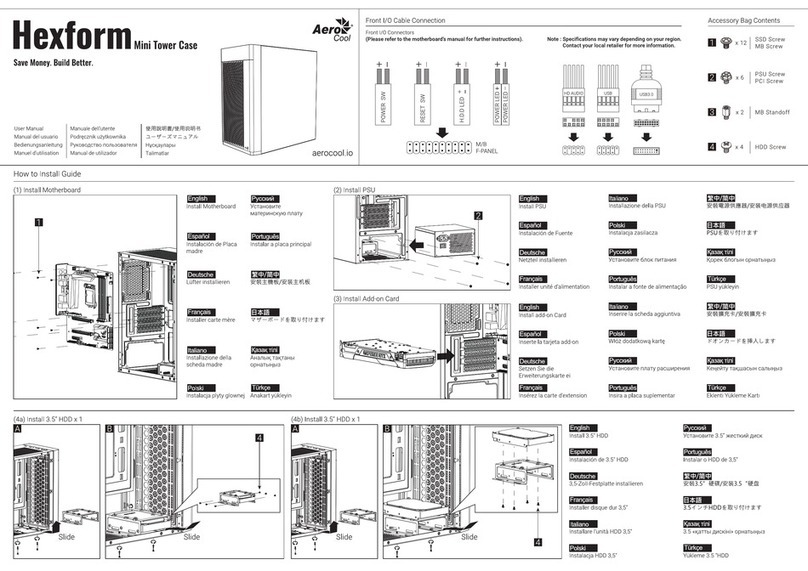
Aerocool
Aerocool Hexform user manual
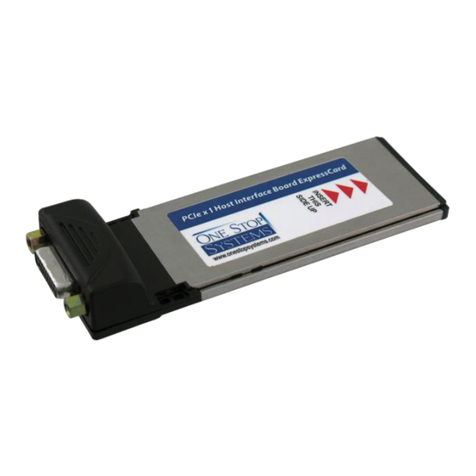
One Stop Systems
One Stop Systems OSS-PCIe-HIB2-EC-x1 user manual
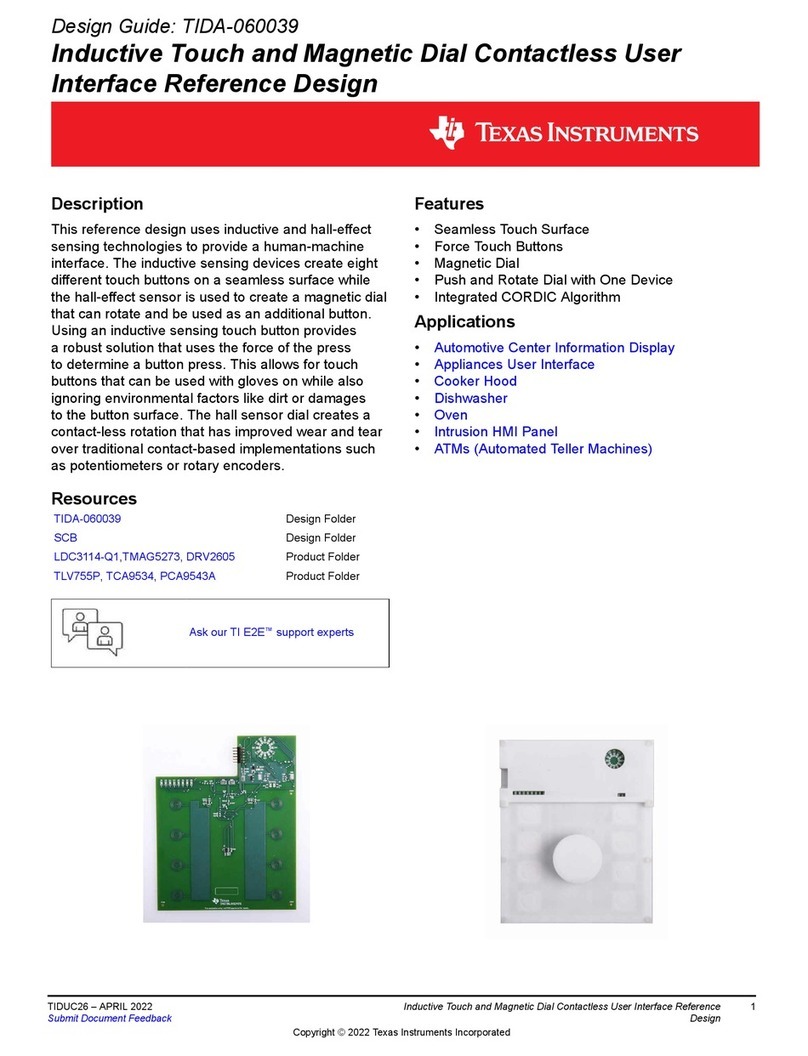
Texas Instruments
Texas Instruments LDC3114-Q1 manual
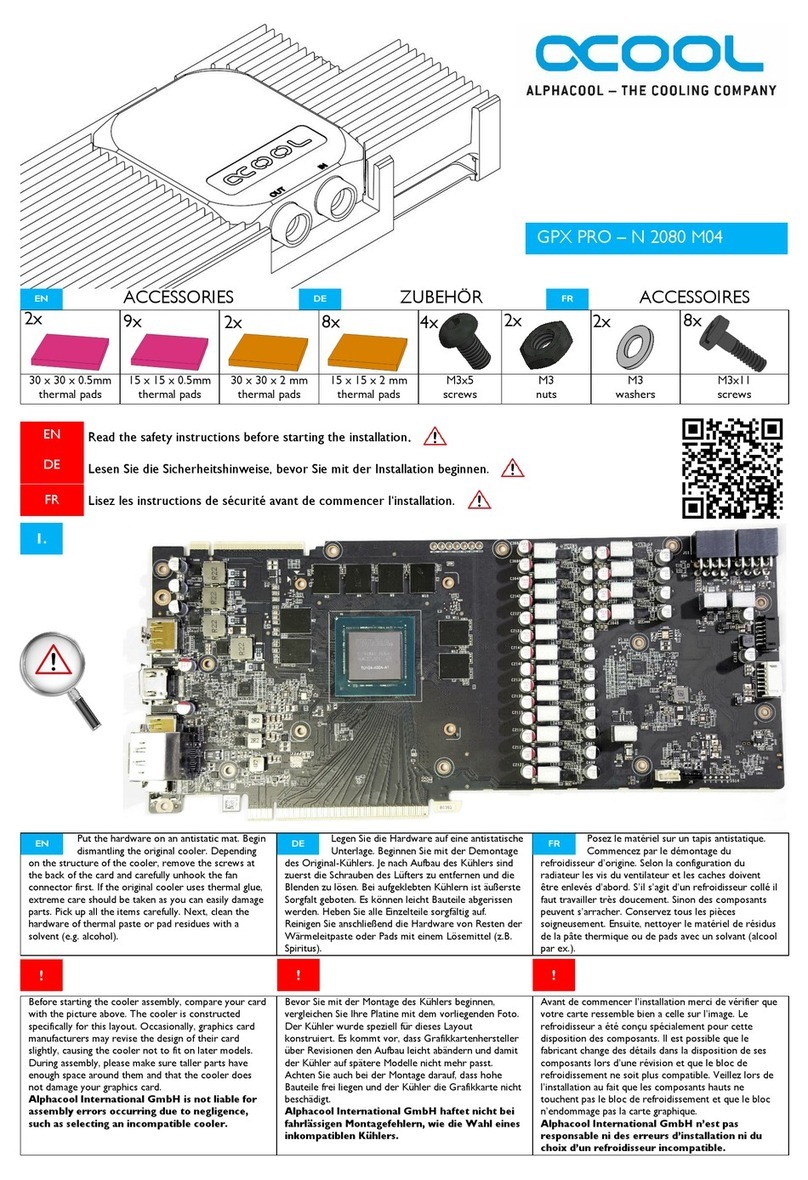
Alphacool
Alphacool GPX PRO - N 2080 M04 manual
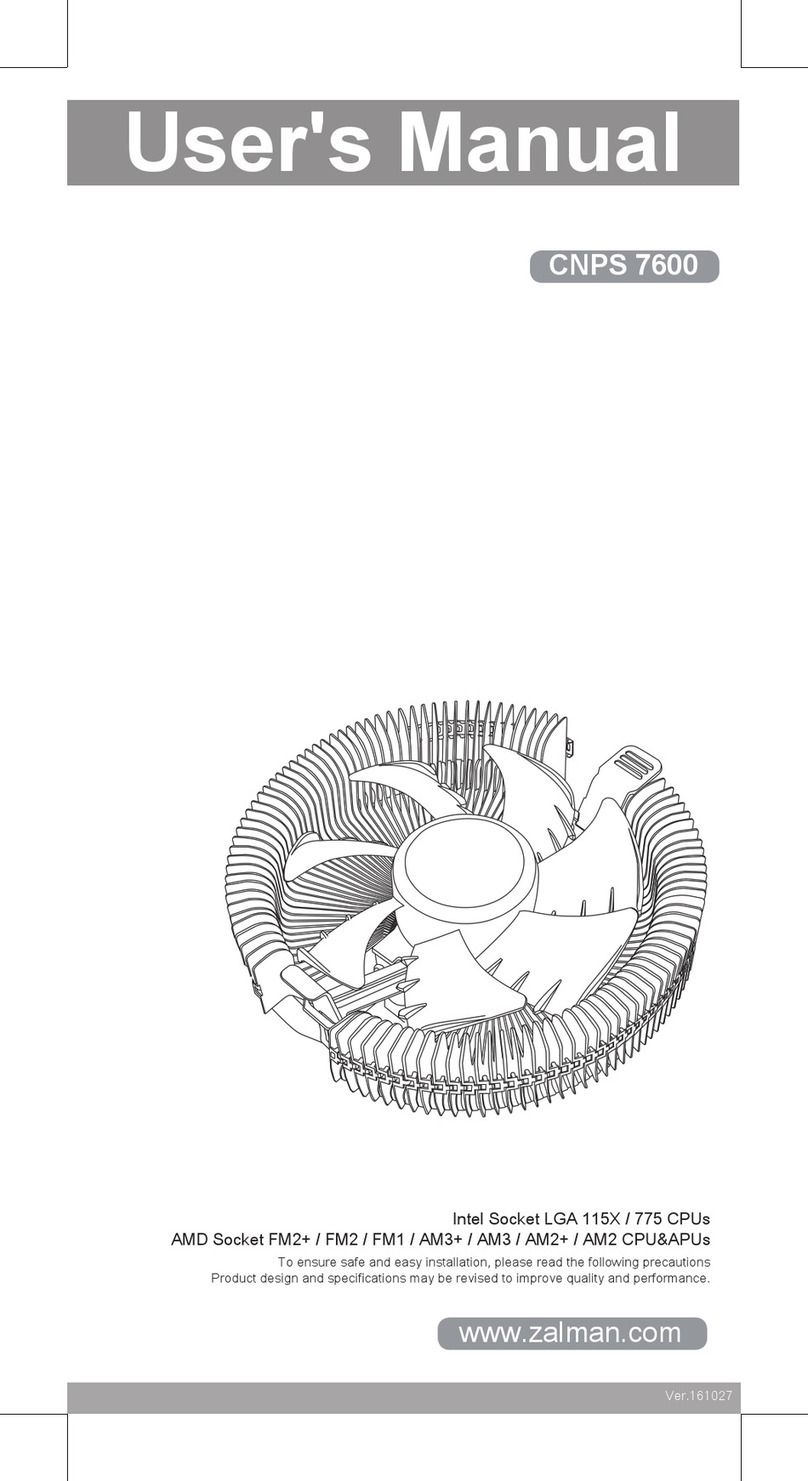
ZALMAN
ZALMAN CNPS 7600 user manual
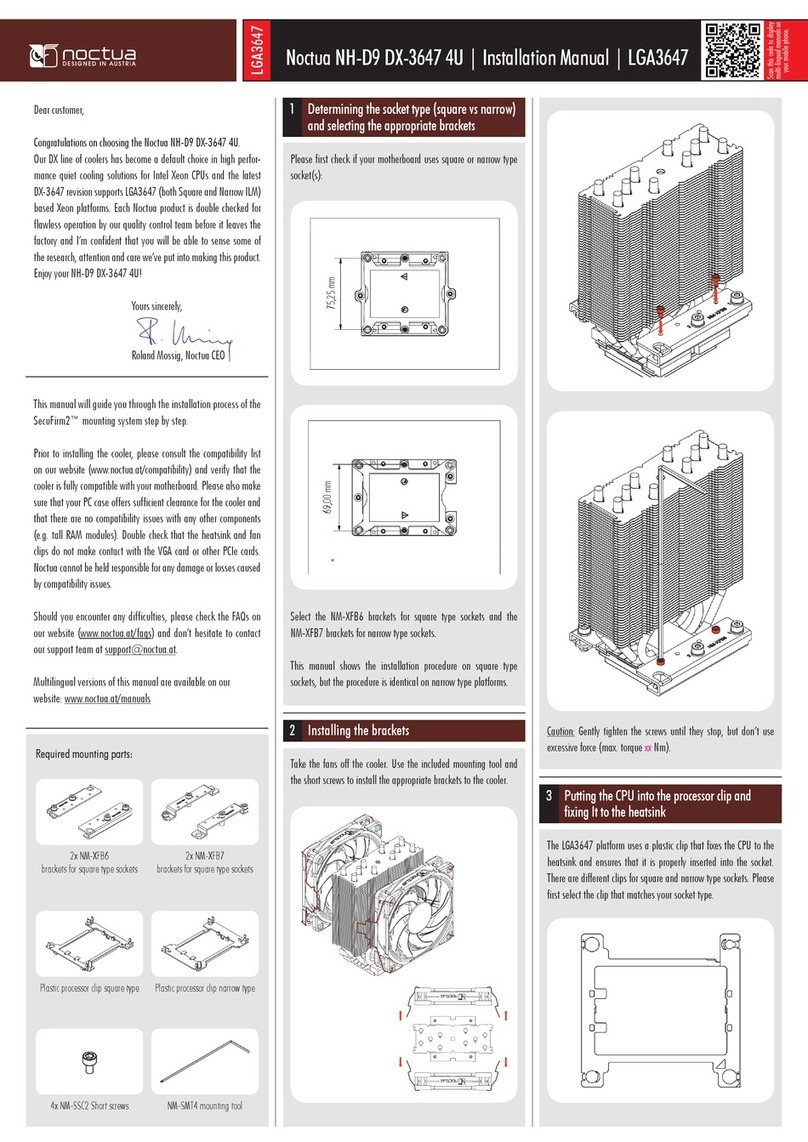
Noctua
Noctua NH-D9 DX-3647 4U installation manual
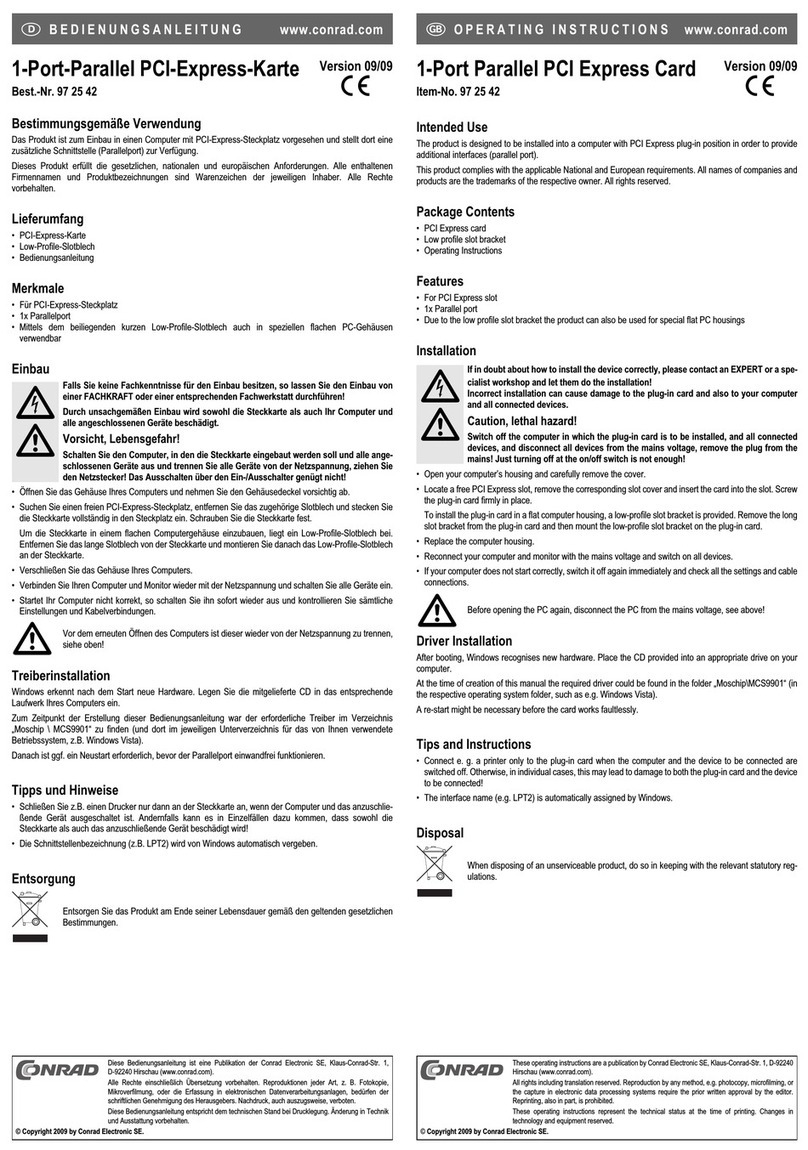
Conrad
Conrad 97 25 42 operating instructions
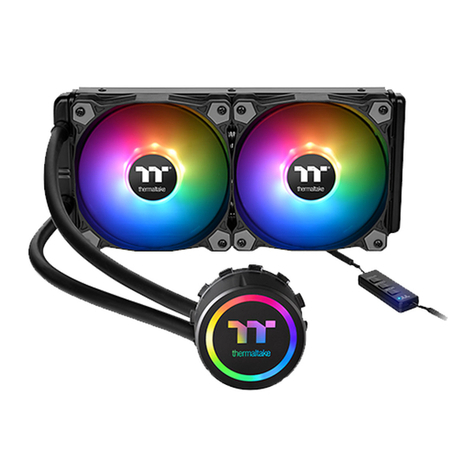
Thermaltake
Thermaltake Water 3.0 240 ARGB Sync Premium Edition... user manual
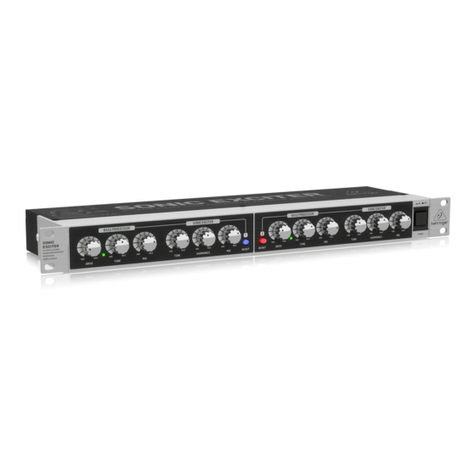
Behringer
Behringer Sonic Exciter SX3040 user manual
